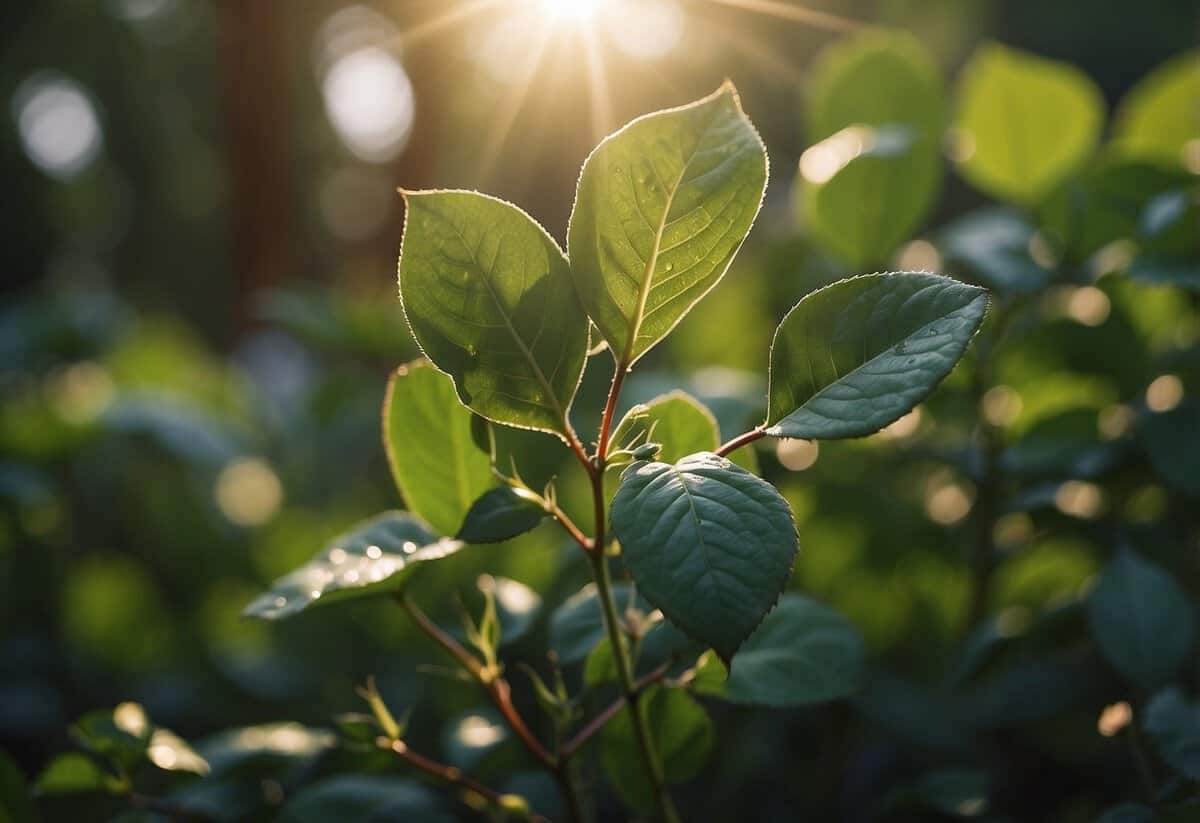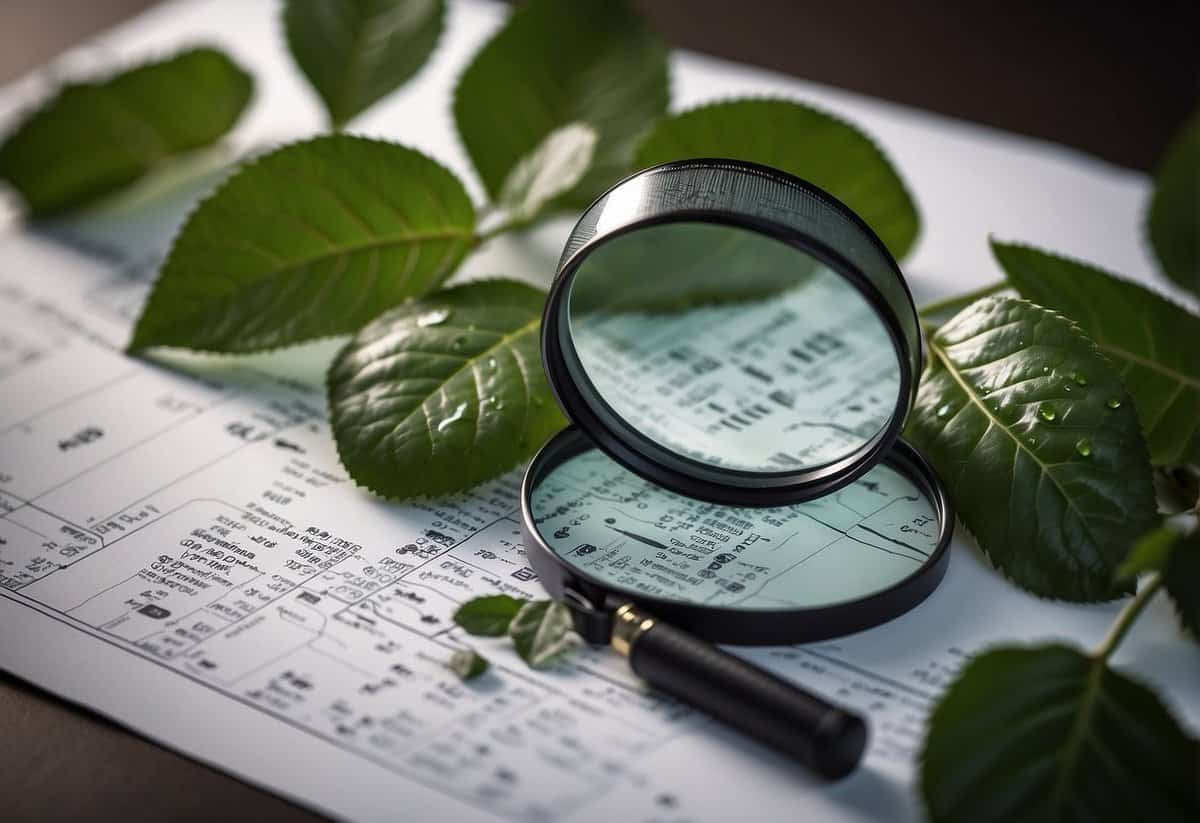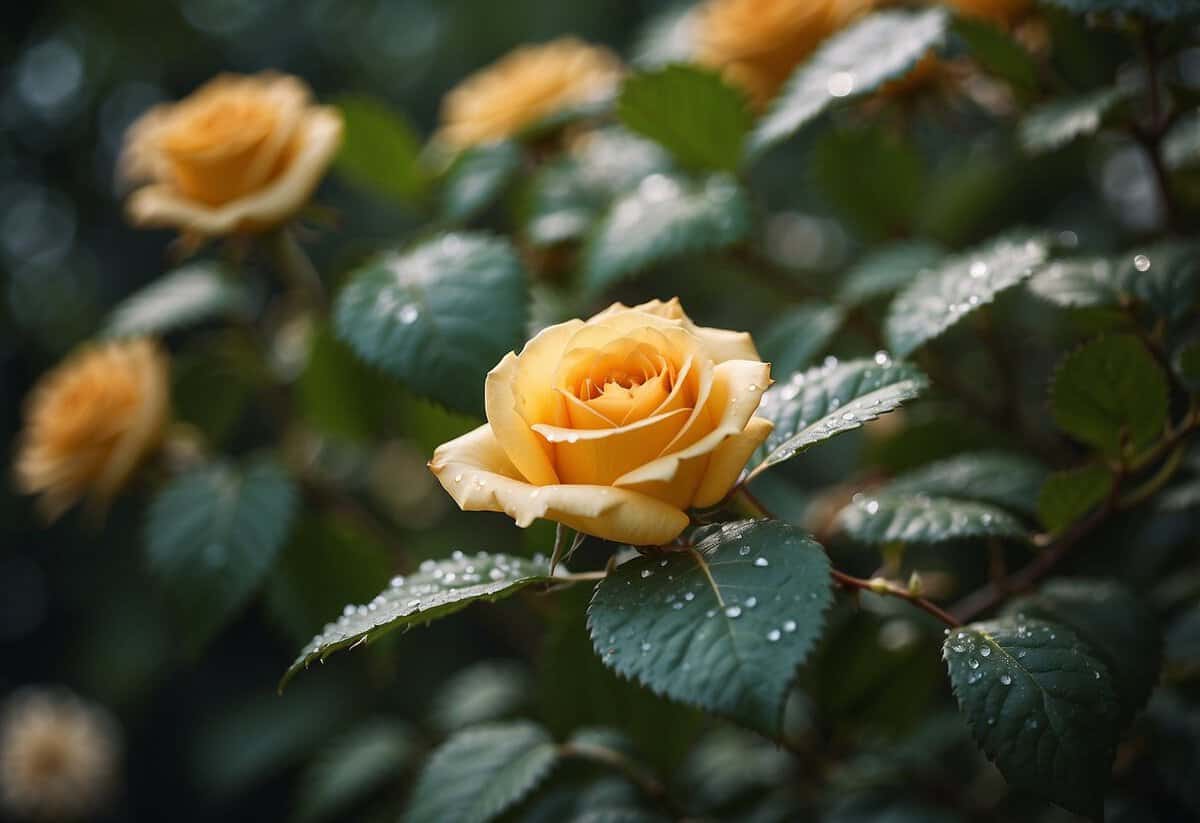What Are the Little Holes in My Rose Leaves? Common Pests and Solutions
If you’ve ever found tiny holes in your rose leaves, you might be wondering what’s causing the damage. The little holes in your rose leaves are most commonly caused by pests like rose slugs or sawfly larvae. These small, slug-like creatures feed on the leaf tissue, leaving a lacy, skeletonized appearance behind.

Not only that, but weather can play a role too. Heavy hail from storms can puncture leaves and cause similar damage. Keeping an eye on the forecast and protecting your roses during bad weather can help prevent this.
Sometimes, fungal diseases like black spot, powdery mildew, and rust can also make your rose leaves look worse for wear. Using fungicides effectively can keep these issues at bay and help your roses stay beautiful and healthy. Learning to identify and treat these problems will ensure your rose garden thrives.
Identifying Common Pests

Understanding the common pests that cause holes in your rose leaves can help you protect your plants. Here, you’ll learn about the most frequent culprits: beetles, rose slugs, sawfly larvae, caterpillars, and leafcutter bees.
Beetle Invasions
Beetles are one of the main pests responsible for damage to rose leaves. Among them, the Japanese beetle and the rose chafer beetle are highly destructive. Japanese beetles are metallic green with copper-colored wings. They love to eat the tissue between the leaf veins, creating a skeletonized appearance.
Rose chafers are light tan and feed on the petals and leaves of roses. They often come in large numbers, causing significant damage. Regularly inspecting your roses for beetles can help prevent infestations. Handpicking beetles early in the morning and placing them in soapy water is an effective control method.
Rose Slugs and Sawfly Larvae
Rose slugs are the larvae of sawflies. These tiny, slug-like creatures feed on the underside of rose leaves, eating away the flesh and leaving a transparent, windowpaned look. The damage often starts in the spring and can continue throughout the summer if not addressed.
Sawfly larvae resemble small caterpillars and can be found on the leaves’ surfaces. They skeletonize the leaves much like the Japanese beetle does, but the damage tends to appear more uniform. Spraying neem oil at the first sign of damage can help control these pests. Additionally, removing affected leaves and keeping the area clean can reduce their impact.
Caterpillars and Leafcutter Bees
Caterpillars and leafcutter bees can also cause holes in rose leaves. Caterpillars chew large irregular holes and can be found in various sizes and colors, such as the green caterpillars from the moth family. Regularly checking for caterpillars and removing them by hand can effectively control their population.
Leafcutter bees cut away large circular pieces from the edges of leaves to use in their nests. These pests don’t typically cause severe damage but can still be unsightly. Encouraging natural predators like birds or using fine netting to cover your roses can help deter these bees without harming beneficial insects.
Dealing with these pests effectively can keep your rose bushes looking beautiful and healthy. Regular inspections and timely interventions are key to minimizing damage.
Cultural and Environmental Factors

Understanding cultural and environmental factors can help you prevent little holes in your rose leaves. Key elements include weather damage, improper gardening practices, and plant diseases, all of which can impact the health of your roses.
Weather Damage
Extreme weather conditions like hail and strong winds can cause significant damage to rose leaves. Hailstorms can pierce foliage, creating holes and even causing physical damage to the stems.
Wind can also batter your rose plants, making them more vulnerable to diseases and pests. Prolonged exposure to harsh sunlight can lead to sunburned leaves, which weaken the plant’s resistance.
Protecting your roses from extreme weather is essential. Set up a canopy or protective cover when you expect hail or strong winds. Keeping an eye on weather reports will help you anticipate these conditions and act accordingly.
Improper Gardening Practices
Overwatering and underwatering are common mistakes that can lead to poor plant health and the presence of holes in leaves. When you water too much, the soil becomes waterlogged, promoting the growth of fungal diseases like black spot and cercospora leaf spot.
Insufficient watering can lead to dry, brittle leaves which are more prone to physical damage and stressing the plant. Ensure your roses get the right amount of water—typically, deep watering once a week is sufficient, though this may vary based on your local climate.
Proper spacing between plants allows for better air circulation, reducing the risk of fungal infections. Make sure your roses get enough sunlight, as inadequate lighting can weaken the plant and make it more susceptible to diseases.
Plant Diseases
Fungal diseases are a major cause of holes in rose leaves. Black spot and powdery mildew are two common fungal infections that affect roses. These fungi thrive in humid, wet conditions and can cause significant damage to your plants if not addressed quickly.
Black spot manifests as dark spots with fringed edges, leading to yellowing and dropping leaves. Powdery mildew appears as a white, powdery coating on the leaves, which eventually causes distortion and holes.
Effective management of fungal diseases includes removing infected leaves and improving air circulation around your plants. Using fungicides can also help control these diseases. Regularly inspect your roses for signs of fungal infections so you can take immediate action.
Diagnosis and Inspection

Identifying the causes of little holes in your rose leaves is crucial. You’ll need to check for signs of insect pests and diseases.
Checking for Insect Signs
Start by inspecting your rose plants closely. Look for insect pests like aphids, sawflies, or rose slugs. These common pests often hide on the underside of leaves. Pay attention to small larvae, which could be the culprits.
Use a magnifying glass to see tiny pests better. Look for holes or skeletonized leaves. Rose slugs, for example, can create a lacy appearance on leaves. You might also see black spots or discolored patches caused by insect feeding.
Early detection can help you manage the infestation before it worsens. Consider introducing beneficial insects like ladybugs to help control pest populations naturally. Regular gardening tips include manual removal and organic sprays as effective control methods.
Assessing for Disease
Diseases can also cause holes in rose leaves. One common disease is powdery mildew, visible as a white or gray powder on the leaves. High humidity and poor air circulation often contribute to its spread. Another disease to watch out for is black spot, which leaves dark spots on the foliage.
During your inspection, examine the overall health of your roses. Look for symptoms like wilted leaves, discoloration, or white spots. These signs indicate a potential disease presence. Good plant spacing and regular pruning help improve air circulation and reduce disease risks.
If you spot signs of disease, remove affected leaves and apply appropriate fungicides. Keeping your rose plants healthy with proper watering and fertilization can prevent many common diseases.
Inspect your garden regularly to catch issues early and ensure vibrant, beautiful roses throughout the growing season.
Prevention and Maintenance

To keep your roses healthy and free of holes, you need to focus on both general plant care and controlling pests. Here are some specific tips to help you maintain your rose plants and keep unwanted visitors at bay.
Healthy Plant Care
First, taking good care of your rose plants will make a big difference. Start by planting roses in well-draining soil. This helps prevent root diseases. Mulch around your plants can keep the soil moist and reduce weeds. Also, water your roses at the base to avoid wetting the leaves, which can lead to fungal diseases.
Pruning is important, too. Trim dead or damaged stems regularly. This improves air circulation and reduces the chances of disease. Aim to create an open shape for your plant, which allows air to move through freely.
Feeding your roses with balanced fertilizer helps them grow strong and healthy. Strong plants can better withstand attacks from pests and diseases. Finally, keep an eye out for any signs of problems, such as discolored leaves or unusual spots. Acting quickly can prevent issues from spreading.
Controlling Unwanted Visitors
Preventing pests is just as important as maintaining your plants. Use beneficial insects like ladybugs and lacewings, which eat harmful pests. You can also install netting or a small fence around your garden to keep out larger pests like deer and rabbits.
Insect pests can cause significant damage. Aphids, for example, are common and can be controlled by spraying your plants with a mixture of water and mild soap. For Japanese beetles, you might try using milky spore on your lawn to reduce their larvae.
Regularly check under leaves and on stems for pests. If you find any, remove them by hand or use organic insecticides. Prevent physical damage by avoiding rough handling of your rose plants. Following these steps will help keep your roses healthy and beautiful.
Treatment and Solutions

Addressing the holes in your rose leaves involves both natural and chemical repellents and physical measures. These solutions help protect your plants, keep them healthy, and prevent future damage.
Natural and Chemical Repellents
Using natural and chemical repellents can effectively tackle the pests causing those pesky holes. Neem oil is a popular choice, acting as a natural insecticide to keep aphids and other insects at bay. Simply mix it with water and spray it on the affected leaves.
Insecticidal soap is another option. It works by suffocating pests like aphids and spider mites. Spray the soap directly onto the leaves, ensuring you cover the underside where pests often hide.
For fungal diseases causing leaf spots, try using fungicides. These sprays help prevent and control disease spread. Applying horticultural oils can also provide a protective barrier against insects and can even help manage certain fungal issues.
Physical Barriers and Removal
Physical methods can also help prevent and fix the damage caused by pests. Use a tarp or fine mesh netting to cover your roses, protecting them from insects. This barrier stops pests from reaching the leaves and laying eggs.
Manual removal of pests is another effective approach. Inspect your plants regularly and pick off any visible bugs, such as caterpillars or rose slugs. This method is especially useful for larger pests that are easy to spot.
Consider placing a fence around your garden. This can discourage larger animals from getting close and damaging your roses. Regular pruning also helps remove damaged leaves, reducing the spread of pests and diseases.
By combining these strategies, your rose plants can thrive with fewer holes and healthier leaves.







